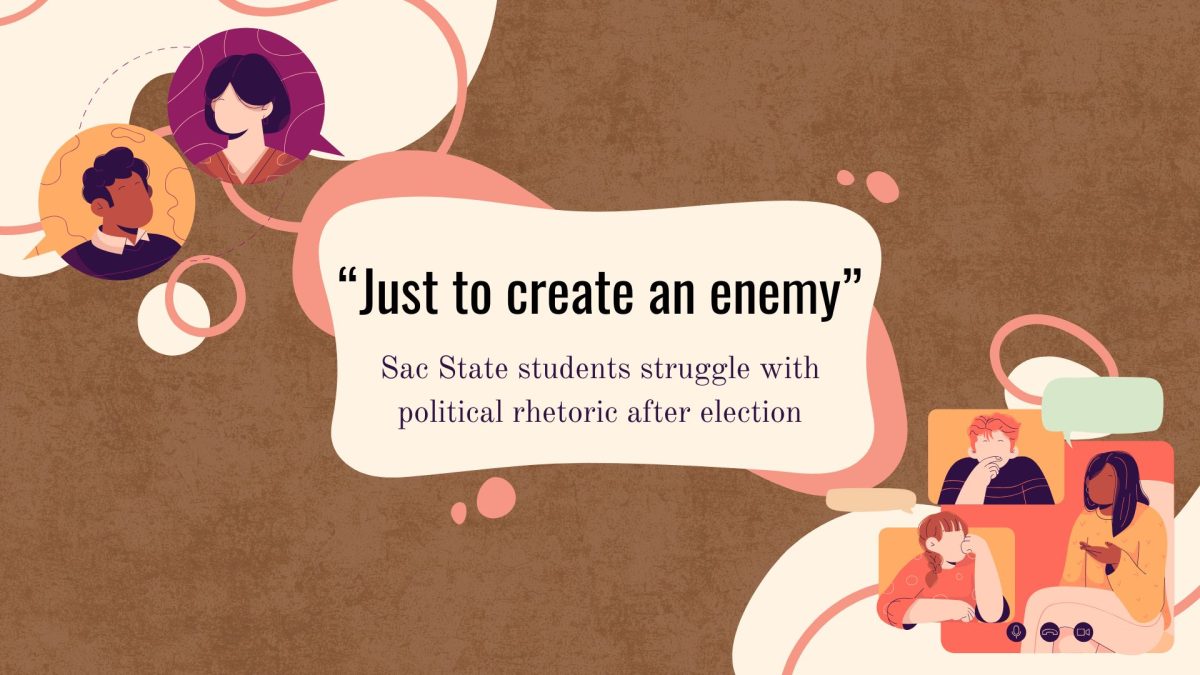Throw, fire clay
October 15, 2008
A collection of wood-fired pottery is on display in the Robert Else Gallery at Sacramento State. The collection is part of the Sixteen Stokers exhibition taking place during the month of October. The artists featured as part of the Sixteen Stokers are both students and alumni of Sac State, as well as Sac State ceramics professor Scott Parady.
The pieces on display in the Else Gallery exemplify how the wood-firing process leaves the pieces’ end result up to the kiln’s fire. The kiln, where the pieces are fired, acts almost like an artist itself, giving each clay creation a unique texture and color. The colors range from dark gray to a shade of turquoise and many of the pieces are sprinkled with rust-colored spots. Pottery textures vary with some having smooth exteriors and others with designs etched in on the sides.
There is also an assortment of sculptures on display in the gallery. One of the sculptures is shaped like a woman’s torso with holes all over it.
In addition to the exhibition, there will be demonstrations on how to sculpt with clay as well as lectures on different ceramic techniques. The lectures will be given by three visiting artists: Owen Nelsen, Tri Tran and Jason Dunn.
Scott Parady said that the pieces were fired in his Anagama kiln. An Anagama kiln is one that is wood-fired as opposed to the majority of kilns which are powered by gas or electricity. The Anagama kiln, built by Parady on his parents’ land in Pope Valley, is no ordinary kiln and requires a lot of manpower.
“It takes us three or four days to load the kiln, and then it takes nine or ten days to fire the ceramics,” Parady said. “You have to load wood into the kiln every five to 10 minutes and it takes one full week to cool off the kiln.”
The wood is thrown into the kiln on schedule in order to keep the 2,300-degree Fahrenheit temperature inside going for the time that it takes to finish the ceramic pieces. Wood is added into the kiln through three sets of holes.
“The wood is stoked in right on top of the work, which gives it a unique texture and color,” Parady said.
He also said that the kiln is able to fit more than 1,000 pieces. The kiln is 20 feet long and 250 cubic feet in area, enough for people to walk around in.
Since using the kiln is such an involved process, the clay is thrown in advance and the kiln is lit only when there are enough pieces to fire. For the Sixteen Stokers event, there were two firings which took place in January and May. Parady said that 500 items were fired.
Art major Jeremy Nelson said there are two ways of sculpting clay into whatever shape desired; either by using a pottery wheel and “throwing” the clay or sculpting it by hand. Either way, Nelson described sculpting clay as a calming experience.
“It’s frustrating and meditative at the same time,” he said.
Nelson has two pieces on display at the gallery; a bottle and a tea bowl.
Parady said that the pieces that were fired in his kiln for the Sixteen Stokers event are mostly pots with some sculptures and decorative vessels. All were handmade and thrown on a pottery wheel.
While traditional ceramics are glazed before being fired in a kiln, the pieces fired in the Anagama kiln were not. Megan Mitchell, a post-baccalaureate student at Sac State, has three pieces on display in the Else Gallery. Mitchell said that the surface effects on the pieces, such as rust-colored spots, are created by the wood ash in the kiln. She said that the ash lands on the pots and sculptures and melts, creating unique textures and effects on the pottery.
Pottery fired in gas and electric kilns allows the artist to have control over how the pottery turns out after firing because they glaze the piece specifically how they want it. This isn’t the case with the Anagama kiln.
“The maker can influence, but can’t have total control over how it turns out,” Parady said.
The way that artists influence how their piece turns out, is by thinking about the best area of the kiln to place the piece in relation to the flames and ash.
Parady hopes that this event will promote the community of artists that participated in the wood-firing and to also promote the wood-firing process itself. One of his students agrees.
“It is a good learning process,” Nelson said. “There is so much that goes into it, and it gives students a much deeper appreciation for the work.”
Stephanie Dumm can be reached at [email protected]





























































































































